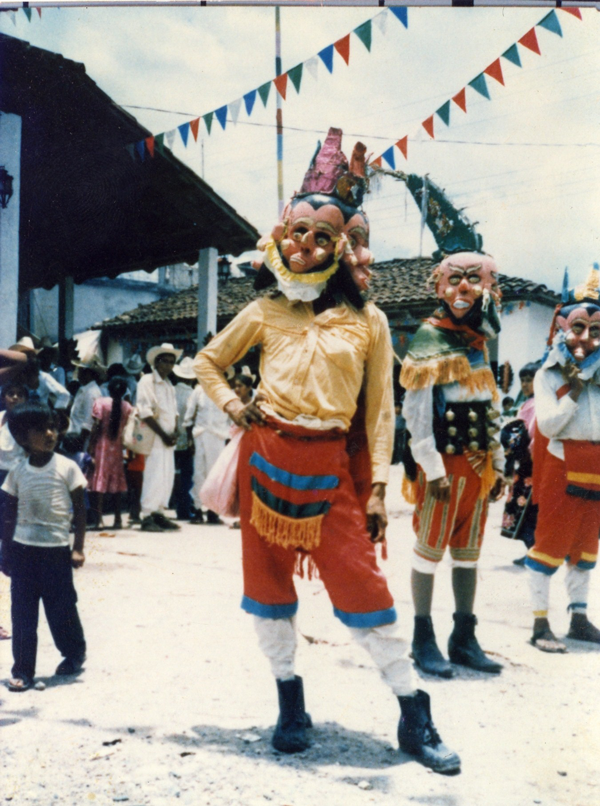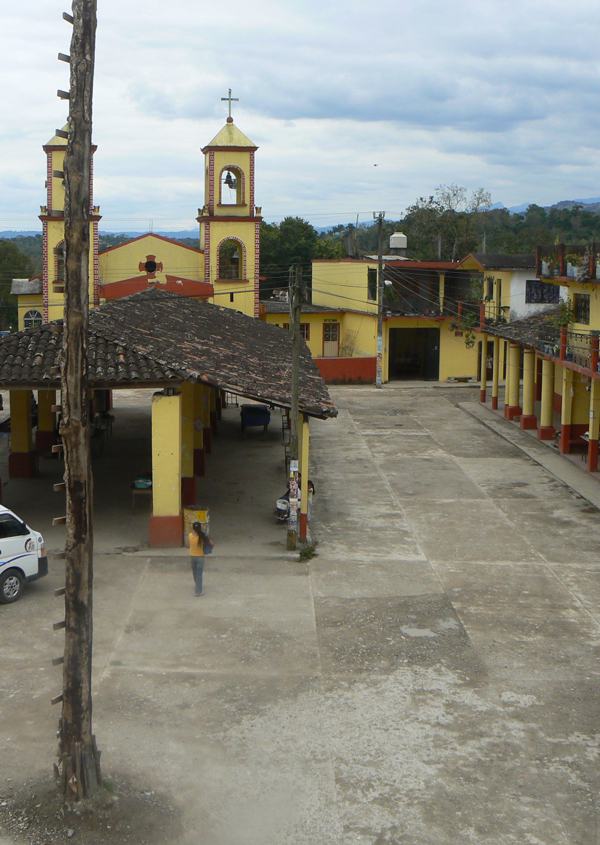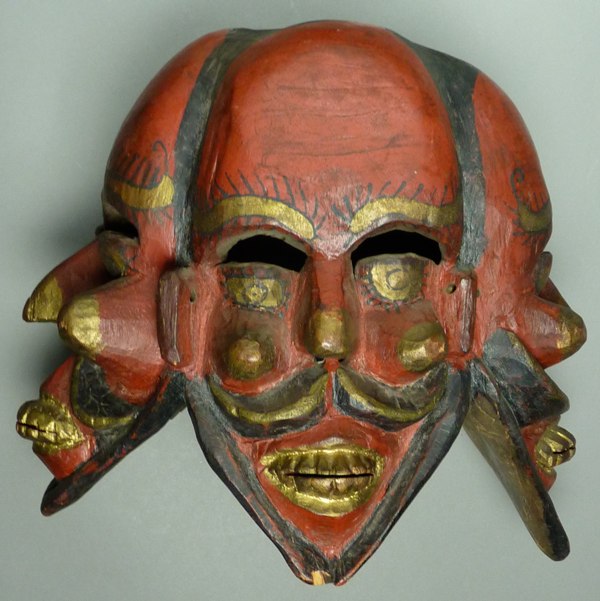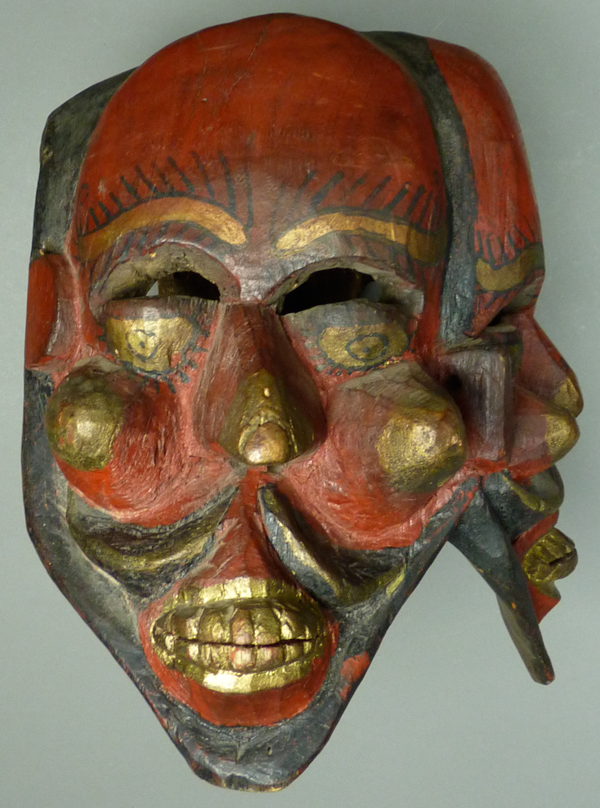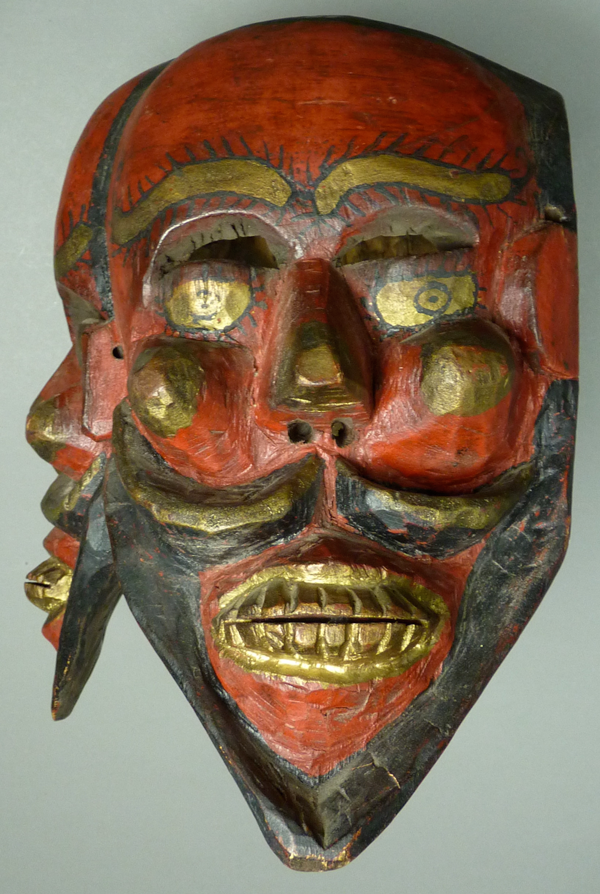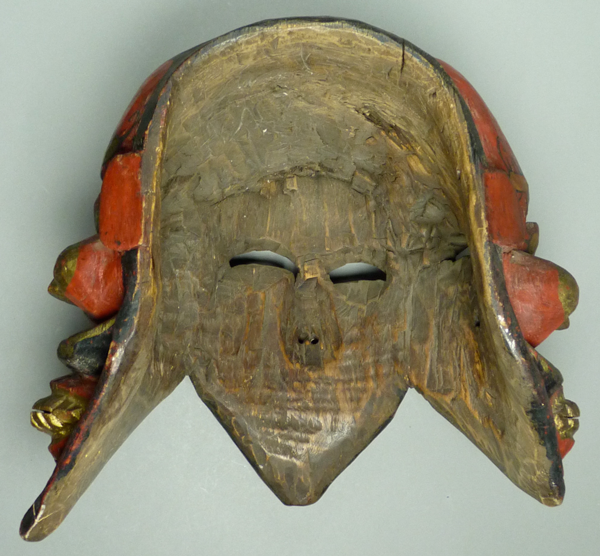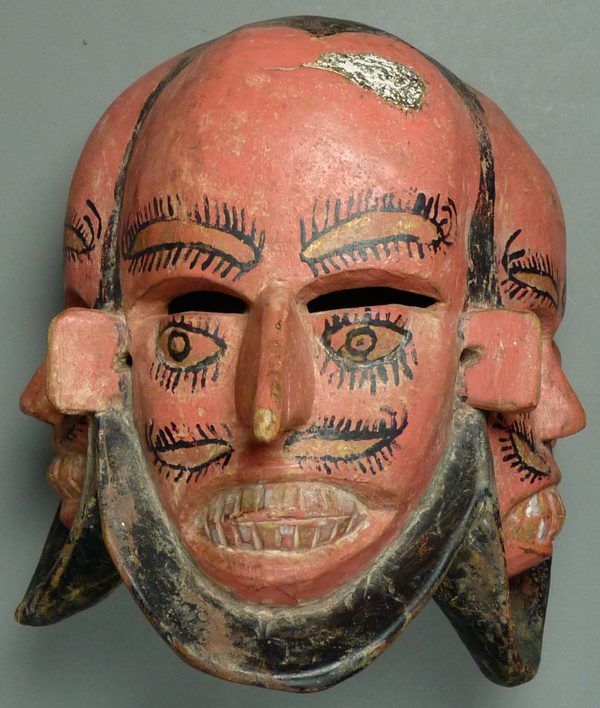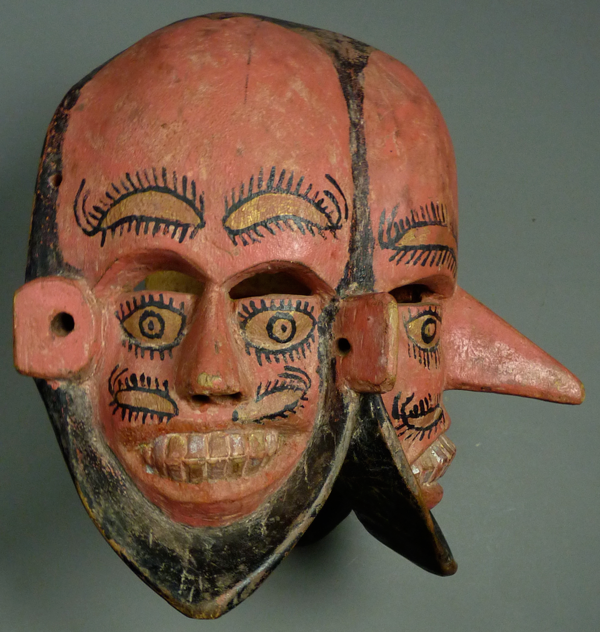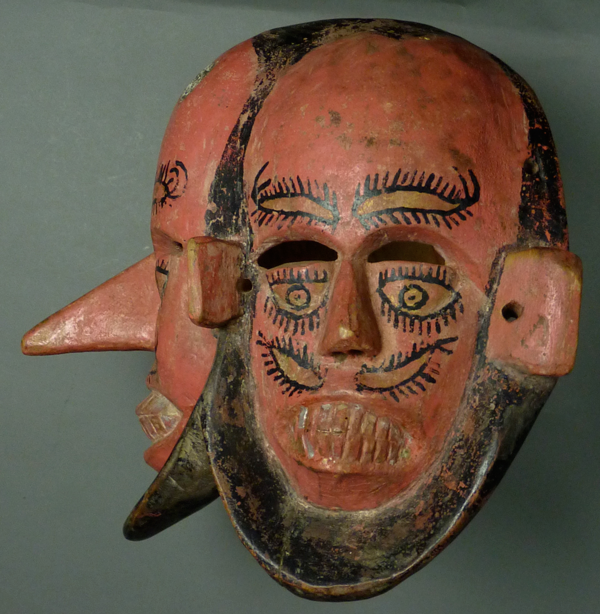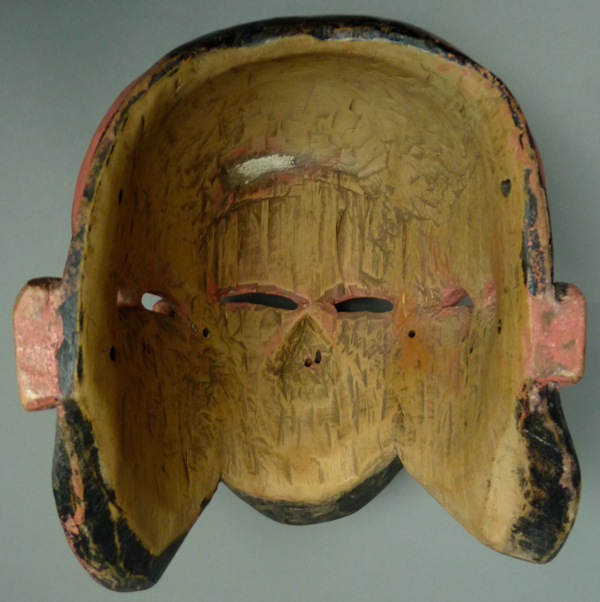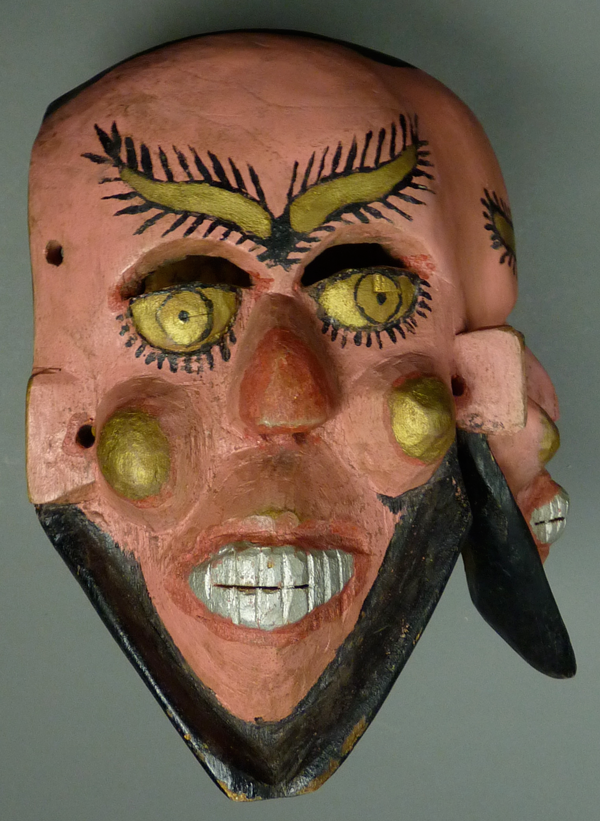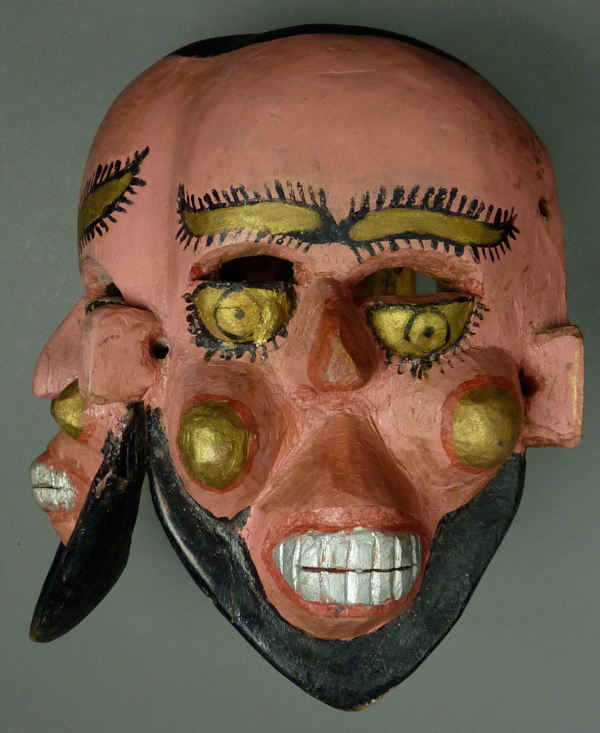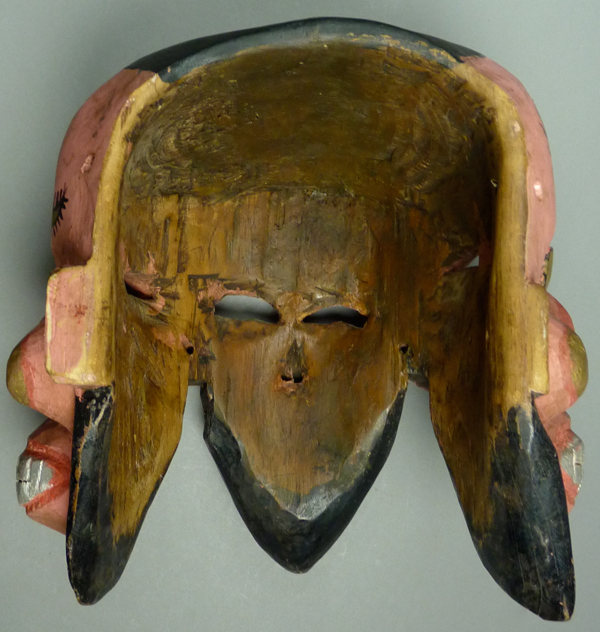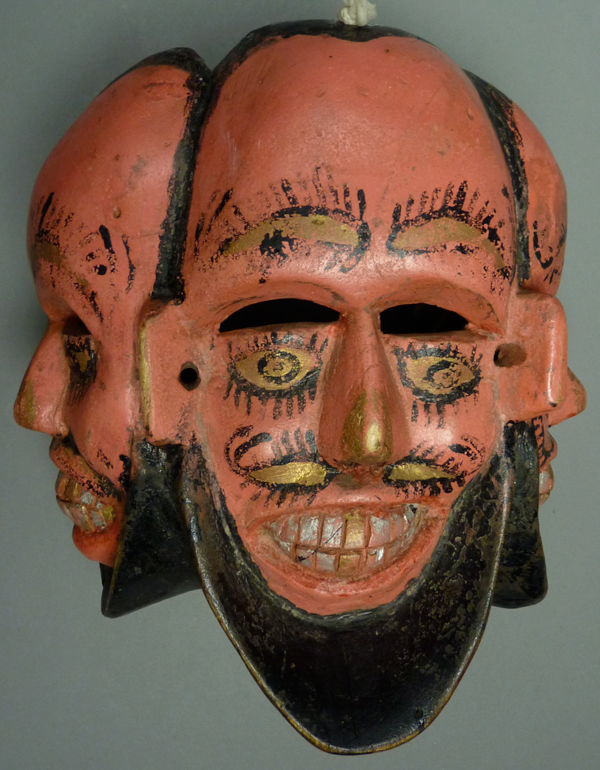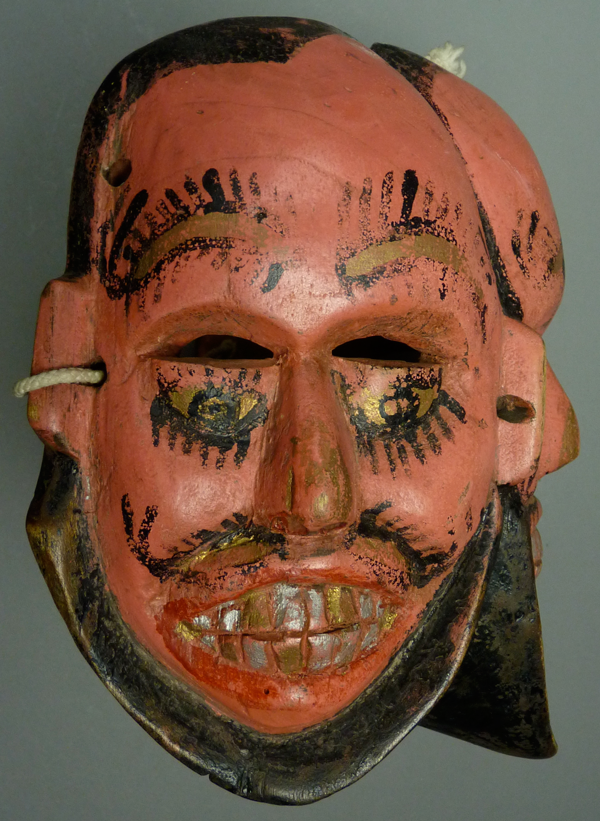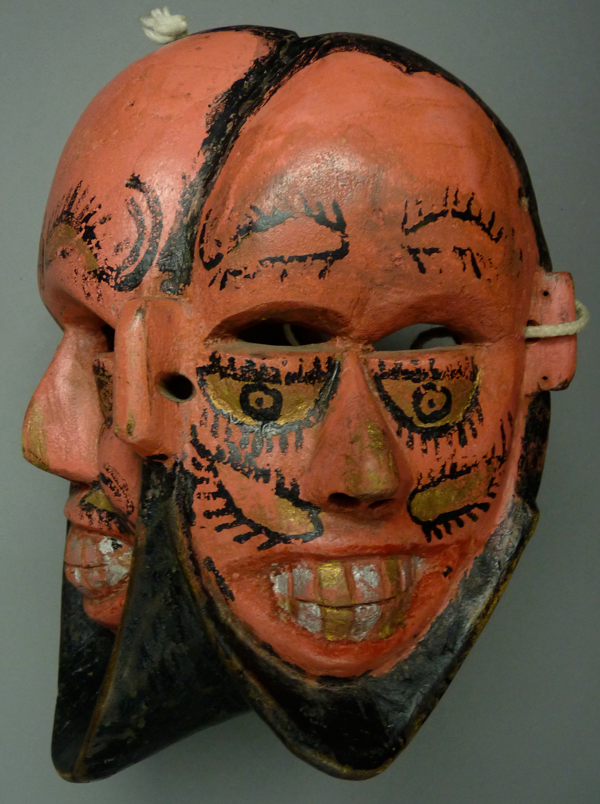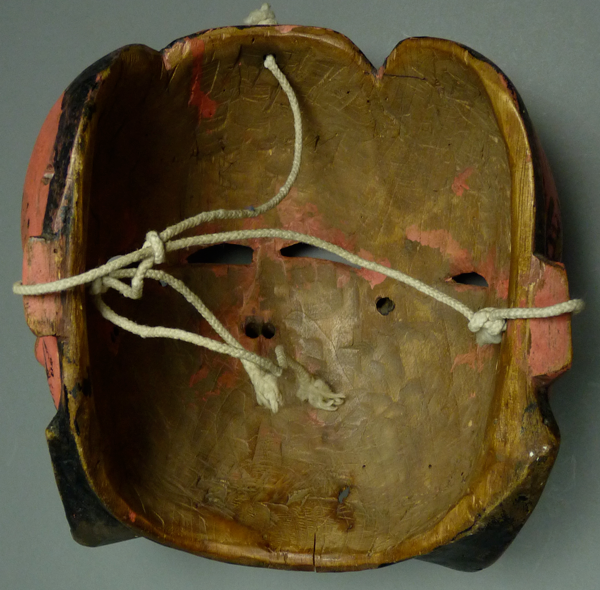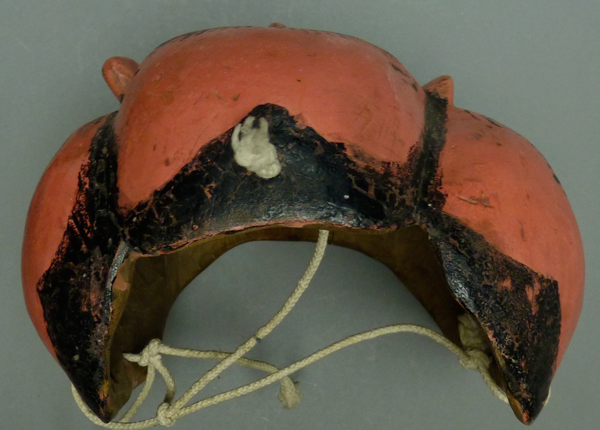Last week I showed you Santiaguero and Pilato masks by Narciso Iturbide Charo, a wonderful carver from San Antonio Rayón, Puebla who died in 1996. Today I will feature four of his three faced Santiaguero masks. These are probably extremely rare; approximately 17 of these were initially collected in the field in the early 1980s and I am not aware that any more have turned up in recent years. It seems that no two of them were the same.
In about 1980 my friend Robin Cleaver found an unusual mask in the city of Puebla; the folk art dealer who owned the mask was in the process of stripping off the “ugly red paint.” The mask was very unusual because it had three faces. I will call this the index mask. Robin purchased the mask and learned the name of the place where it had been found. In a partnership with Jaled Muyaes and Estela Ogazon, Robin and his wife Barbara sent a runner to that town with a camera, and although the camera stopped working during the trip, there was one clear photo on the film roll. This showed Santiaguero dancers in action, wearing traditional costumes, Morion headdresses or paper crowns, and masks with three faces. In this local variant, the morion headress is worn by a Santiaguero and the crowns by Pilatos, yet all wear three faced masks of the same color. A set of about 16 masks was brought out on the backs of mules over mountain trails, as there were no roads to this community at that time. Here is the dance photo that accompanied the masks. According to Manuel Antonio Castañeda, the dancer wearing the green Morion headdress and the apron of bells is Narciso Iturbide Charo himself. Later I will show you his mask.
Robin Cleaver had the index mask repainted in the Santiaguero style, and I bought it in 1988. Later I was able to obtain three more of these masks. I was not told the name of the town where these masks came from, because the Cleavers wanted to keep the place a secret to allow them time to return there to look for more of these three faced masks. That trip never took place, because of the perceived difficulty of travel there; as the years passed they even forgot the name of the town. Two of the masks in my collection had names written on the back in pencil; these were villages outside of the town of San Antonio Rayón, Puebla.
In December 2010 Vernon Kostohryz, Carlos Moreno Vásquez, and I traveled to those villages in search of information; ironically, good roads to this area had been built in the interim. Villagers in both places denied that such a dance had ever occurred there. When they looked at the old dance photo they said that it was taken in San Antonio Rayón. Sure enough, it was. Here is a photo that I took in 2010 of the same part of the town square that was the site for the dance photo. The girl in the yellow shirt in the photo is standing m/l at the same place where the dancer in a yellow shirt was standing in the dance photo. In the foreground of the 2010 photo you can see a wooden pole for the Voladores dance. The open building between the pole and the church is the town market building. That is the building to the left of the dancers in the old photo.
Here is the mask that Robin Cleaver found in the city of Puebla (in the Mexican state of Puebla).
You can see that Robin had this mask repainted in a darker shade than its probable original color. I simply left it that way. This mask measures 12 inches in height, 13 inches wide, and 7 inches in depth. The three faces represent Pontius Pilate, King Herod, and Caiaphas the high priest of the Jewish temple at the time of the crucifixion of Christ. Thus this is a mask of three of Christ’s would be or actual killers. Talk about a potent symbol of evil! Evidently this mask was worn by a Pilato dancer. Here are some additional views of this mask.
Here is the face on the right side of the mask; the face seen in profile is the one on the front. The cheeks of these faces have exaggerated shapes that suggest breasts! The rectangular wooden extensions that flank the central face have holes for the attachment of a cantunga, a lacy cotton curtain that is meant to mimic a beard. There was a photo of a Santiaguero wearing a mask with an attached cantunga in my post of January 4, 2015.
Here is the left side of the index mask.
The back of the index mask demonstrates heavy use.
Here is another of this set that I obtained from Jaled Muyaes and Estela Ogazon, of Mexico City.
The white spot on the forehead is a plaster repair. Other views of this mask follow. This mask measures 12 inches in height, 10 inches wide, and 10 inches in depth.
The right side of the second mask; the face seen in profile is the one that faces to the front. In this view one can clearly differentiate the rectangular tab for the cantunga on the right and the D shaped ear on the left. This difference is not so clearly seen on the other masks.
The left side of the second mask.
The back of the second mask; the plaster repair is also visible from behind.
The third mask is the one that was worn by Narciso in the dance photo. In the interim it split into several pieces and was repaired by an expert restorer.
This mask measures 11 inches in height, 11 inches wide, and 9 inches in depth.
The right side of the third mask. Again the cheeks are exaggerated.
The left side.
The back of the third mask.
I will end with the rarest of the rare—a child’s three faced Santiaguero mask from San Antonio Rayón. This was one of the masks the Cleavers had received from the group collected in the early 1980s.
This mask measures 10½ inches in height, 9 inches wide, and 6 inches in depth.
The right side of the child’s three faced mask.
The left side.
The back of the child’s mask. The top edge of this mask is scalloped.
The view of this mask from above follows.
The next photo shows the mask from below, looking at three noses peering over three beards. I took this photo to reveal the details; now I realize what a comical image this seems.
Next week I will discuss the dance helmets that can be worn by Santiago in this dance.

